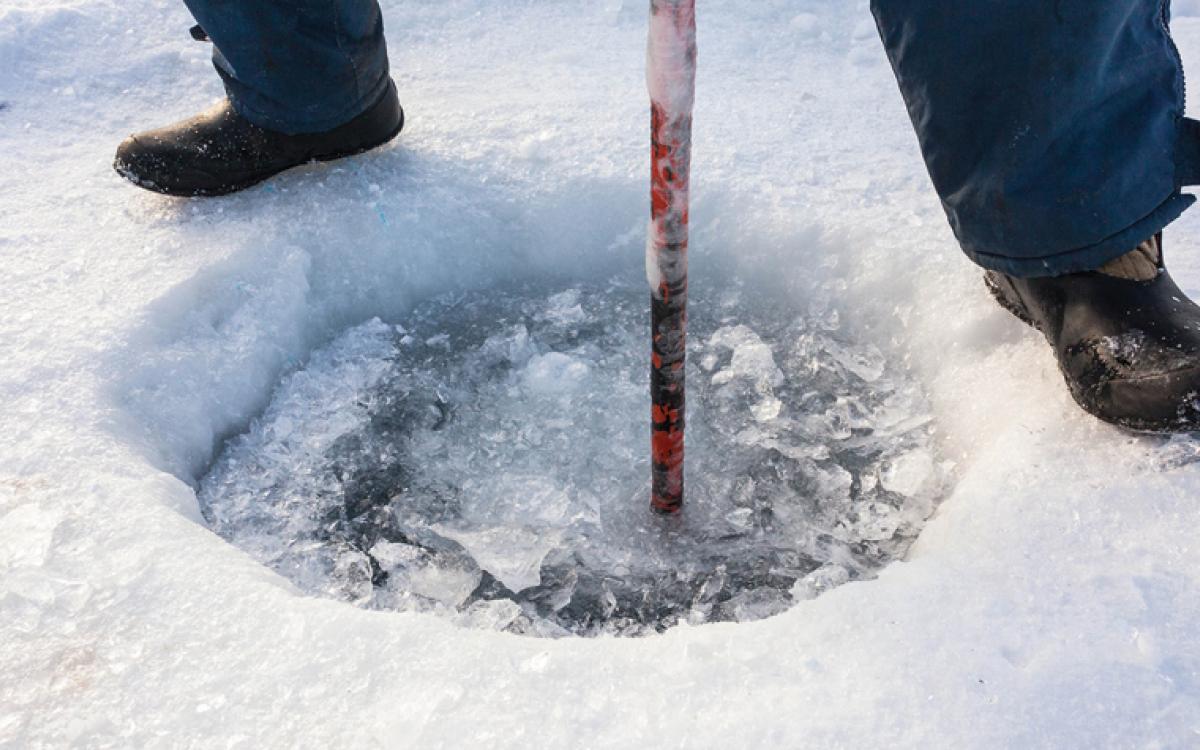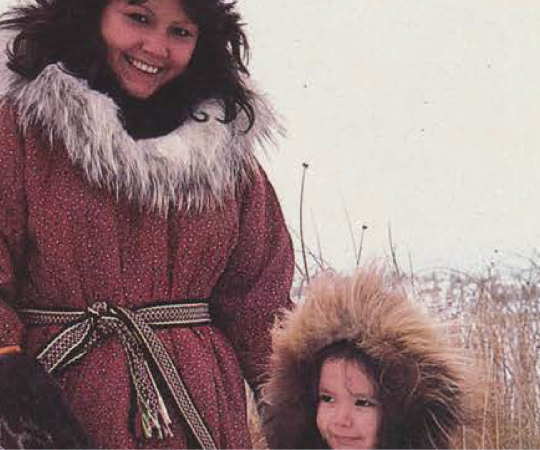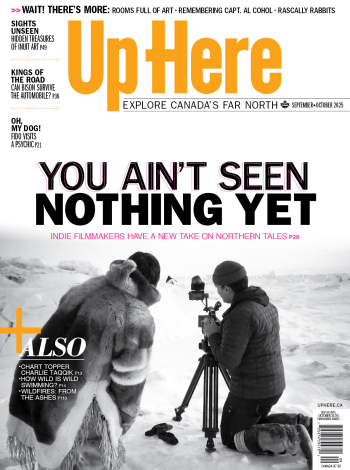We would go fishing every weekend in the winter, my dad, myself, my brother-in-law and sometimes my brothers.
It was great fun to work in -30 C—that was so much warmer than -40 C or -50 C. We’d work with no mitts. We’d take the fish off the nets and the only thing I can say is it’s like working with fire—if you keep going quick, you won’t get burned! That MC Hammer song “U Can’t Touch This” means something else in Nunavut fishing.
We chiseled the ice and spooned it. No auger. If you got going in a rhythm, you could almost go into a trance and go for several minutes at a time. Sometimes we were lucky and the ice would only be 10 feet thick. It was a real marathon when it was 12 feet. At the very least it kept you warm. The bad days were when you did this for an hour and you’d hear this ting—the chisel hitting rock—and not the swoosh of water. If that happened, you just pulled the chisel out, re-sharpened it and started again.
We were 120 kilometres from home. It was a two- or three-hour drive from home, so we slept in an igloo. My dad would build it and my job was to cover the cracks and putty the edges with snow. It was a tough job. When I was younger, I can remember doing one line all around and then going to sit by the entrance. I would blow warm air into my mitts, then inside my parka just underneath the neck, and then run back out and start where the wind was blowing its hardest and work around so that, as I got closer to finishing, I wasn’t as exposed.
We’d bring a high-frequency radio and that was our way of communicating with the community. We’d call home and one of the elders would pick up our call and they’d send a messenger to our place to say we were okay. Those radios used big size-D batteries—like nine of them—and they’d be dead frozen. So we’d each get one and put them under our armpits to thaw them out.
Once I had a teacher calling me Raisin Head all through the year. My dad would give fish to people who asked—guess who didn’t get the best fish in town?
When we were kids, we had this game in the dead of winter: we’d take our mitts off and see who could keep their hands out and exposed longest. If you lost, you were the weakest link. We didn’t fight often; this is how we settled bets. We’d be eyeballing each other the whole time and sometimes you could see the other guy tearing up because it hurt so much.
It’s a funny thing, when there’s no wind, when it’s very cold, you’ll look across the lake kilometres away and you’ll see a bunch of caribou and they’ll sound like they’re walking right beside you, as the sound travels on the hard snow. Caribou —tuktu—have great coats. While we try to protect ourselves from the cold in a blizzard, tuktu eat and shovel snow like it’s a nice summer day out in the strongest storm. We were travelling in a blizzard and we almost bumped into a tuktu. He had his head buried in the snow and, when he emerged, he had a mouthful of lichen, chewing away. And here I was, fighting for my life almost.
One time, we were heading home and the blizzard was so bad I had my old man lead the way. (If I were in charge, we’d probably end up in Hawaii.) He used snowdrifts and his cigarette pack. He placed the pack on the ground and watched it move to tell the direction of the wind. He would then see how the snow blew over snowdrifts. We would use this as our eyes—so long as the wind was hitting you and the snowdrifts from the same direction, in the big picture, you were heading in the right direction. He’d stop every so often to make sure the wind wasn’t doing funny things, like changing direction. It’s pretty interesting to be travelling blind. You really start to question after some time if you’re heading the right direction. Finally, sometimes after 12 hours in the blizzard, you would see a landmark that you knew was close to home and it was like winning the lottery. Even better when your mom knew you’d be home about this time and there was hot food on the table.
I always had a frostbitten face—my left and right cheeks, my ears—from travelling every weekend when I was 13 to 18. I believe that’s why I look the way I do today, very little wrinkles from so much exposure to frostbite. Once I had a teacher calling me Raisin Head all through the year. My dad would give fish to people who asked—guess who didn’t get the best fish in town?
We’d leave Saturday and come back Sunday evening with a fish load and some caribou. And you know, I never really thought it was cold.










